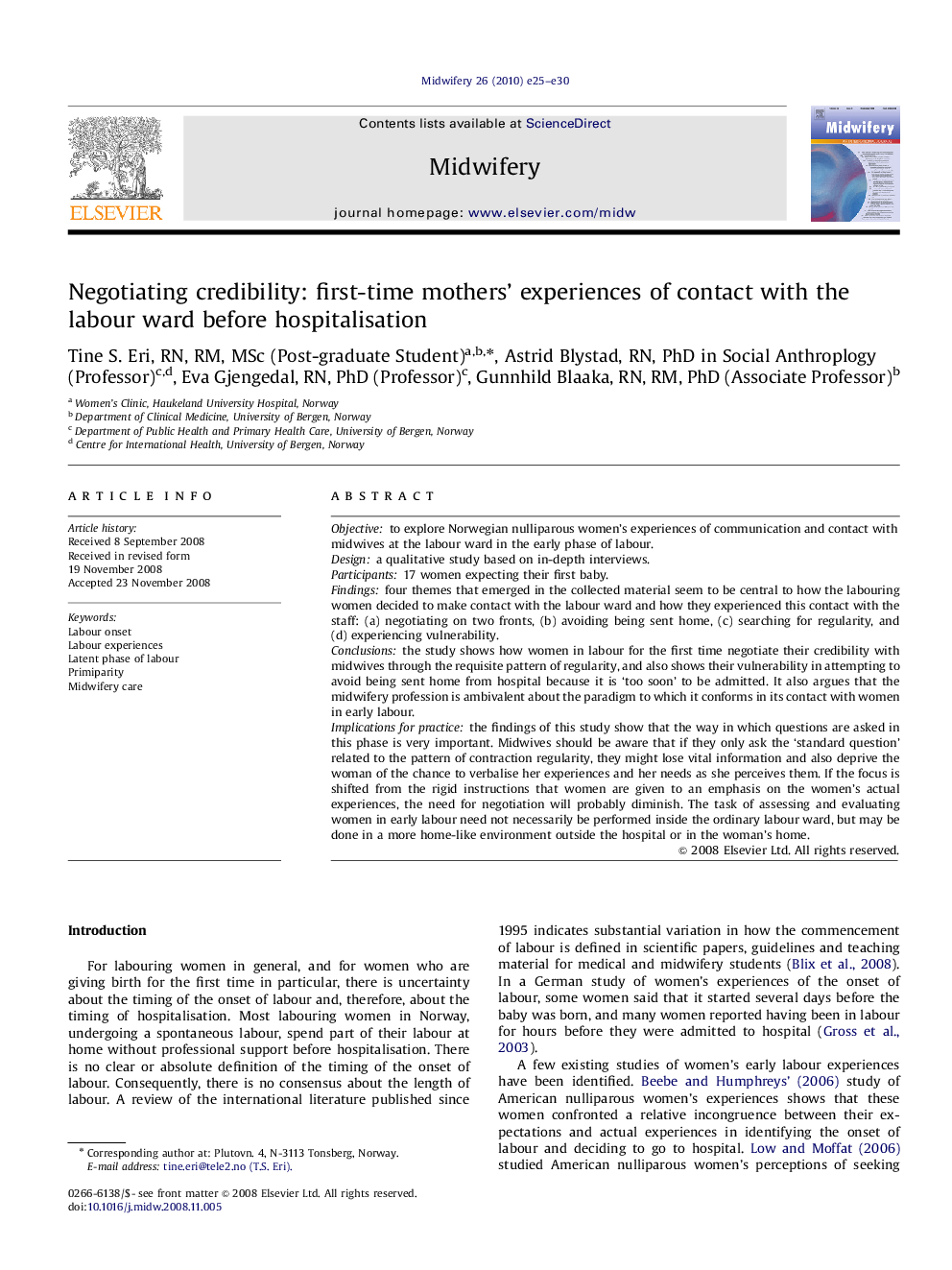| Article ID | Journal | Published Year | Pages | File Type |
|---|---|---|---|---|
| 1085171 | Midwifery | 2010 | 6 Pages |
Objectiveto explore Norwegian nulliparous women's experiences of communication and contact with midwives at the labour ward in the early phase of labour.Designa qualitative study based on in-depth interviews.Participants17 women expecting their first baby.Findingsfour themes that emerged in the collected material seem to be central to how the labouring women decided to make contact with the labour ward and how they experienced this contact with the staff: (a) negotiating on two fronts, (b) avoiding being sent home, (c) searching for regularity, and (d) experiencing vulnerability.Conclusionsthe study shows how women in labour for the first time negotiate their credibility with midwives through the requisite pattern of regularity, and also shows their vulnerability in attempting to avoid being sent home from hospital because it is ‘too soon’ to be admitted. It also argues that the midwifery profession is ambivalent about the paradigm to which it conforms in its contact with women in early labour.Implications for practicethe findings of this study show that the way in which questions are asked in this phase is very important. Midwives should be aware that if they only ask the ‘standard question’ related to the pattern of contraction regularity, they might lose vital information and also deprive the woman of the chance to verbalise her experiences and her needs as she perceives them. If the focus is shifted from the rigid instructions that women are given to an emphasis on the women's actual experiences, the need for negotiation will probably diminish. The task of assessing and evaluating women in early labour need not necessarily be performed inside the ordinary labour ward, but may be done in a more home-like environment outside the hospital or in the woman's home.
